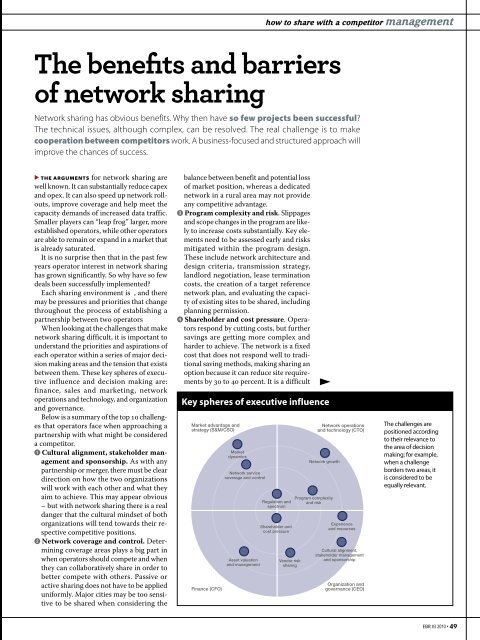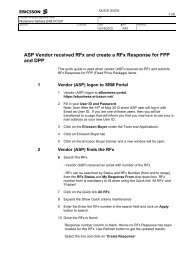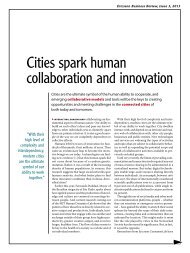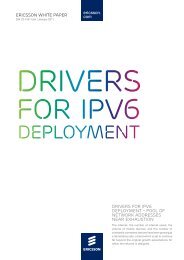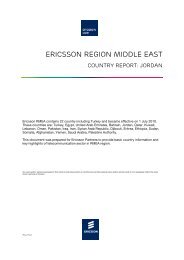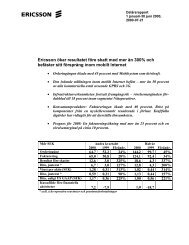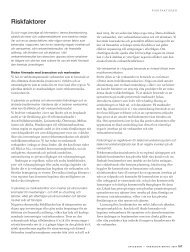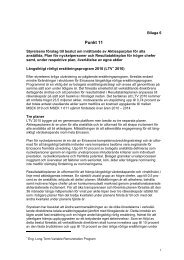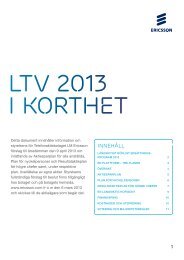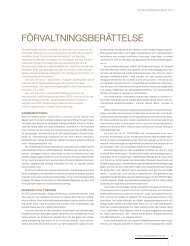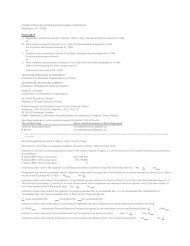Telenor's - Ericsson
Telenor's - Ericsson
Telenor's - Ericsson
- TAGS
- ericsson
- www.ericsson.com
You also want an ePaper? Increase the reach of your titles
YUMPU automatically turns print PDFs into web optimized ePapers that Google loves.
The benefi ts and barriers<br />
of network sharing<br />
Network sharing has obvious benefits. Why then have so few projects been successful?<br />
The technical issues, although complex, can be resolved. The real challenge is to make<br />
cooperation between competitors work. A business-focused and structured approach will<br />
improve the chances of success.<br />
▶ THE ARGUMENTS for network sharing are<br />
well known. It can substantially reduce capex<br />
and opex. It can also speed up network rollouts,<br />
improve coverage and help meet the<br />
capacity demands of increased data traffic.<br />
Smaller players can “leap frog” larger, more<br />
established operators, while other operators<br />
are able to remain or expand in a market that<br />
is already saturated.<br />
It is no surprise then that in the past few<br />
years operator interest in network sharing<br />
has grown significantly. So why have so few<br />
deals been successfully implemented?<br />
Each sharing environment is , and there<br />
may be pressures and priorities that change<br />
throughout the process of establishing a<br />
partnership between two operators<br />
When looking at the challenges that make<br />
network sharing difficult, it is important to<br />
understand the priorities and aspirations of<br />
each operator within a series of major decision<br />
making areas and the tension that exists<br />
between them. These key spheres of executive<br />
influence and decision making are:<br />
finance, sales and marketing, network<br />
operations and technology, and organization<br />
and governance.<br />
Below is a summary of the top 10 challenges<br />
that operators face when approaching a<br />
partnership with what might be considered<br />
a competitor.<br />
� Cultural alignment, stakeholder management<br />
and sponsorship. As with any<br />
partnership or merger, there must be clear<br />
direction on how the two organizations<br />
will work with each other and what they<br />
aim to achieve. This may appear obvious<br />
– but with network sharing there is a real<br />
danger that the cultural mindset of both<br />
organizations will tend towards their respective<br />
competitive positions.<br />
� Network coverage and control. Determining<br />
coverage areas plays a big part in<br />
when operators should compete and when<br />
they can collaboratively share in order to<br />
better compete with others. Passive or<br />
active sharing does not have to be applied<br />
uniformly. Major cities may be too sensitive<br />
to be shared when considering the<br />
balance between benefit and potential loss<br />
of market position, whereas a dedicated<br />
network in a rural area may not provide<br />
any competitive advantage.<br />
� Program complexity and risk. Slippages<br />
and scope changes in the program are likely<br />
to increase costs substantially. Key elements<br />
need to be assessed early and risks<br />
mitigated within the program design.<br />
These include network architecture and<br />
design criteria, transmission strategy,<br />
landlord negotiation, lease termination<br />
costs, the creation of a target reference<br />
network plan, and evaluating the capacity<br />
of existing sites to be shared, including<br />
planning permission.<br />
� Shareholder and cost pressure. Operators<br />
respond by cutting costs, but further<br />
savings are getting more complex and<br />
harder to achieve. The network is a fixed<br />
cost that does not respond well to traditional<br />
saving methods, making sharing an<br />
option because it can reduce site requirements<br />
by 30 to 40 percent. It is a difficult<br />
Key spheres of executive influence<br />
Market advantage and<br />
strategy (S&M/CSO)<br />
Finance (CFO)<br />
Market<br />
dynamics<br />
Network service<br />
coverage and control<br />
Asset valuation<br />
and management<br />
how to share with a competitor management<br />
Regulation and<br />
spectrum<br />
Shareholder and<br />
cost pressure<br />
Vendor risk<br />
sharing<br />
Network growth<br />
Program complexity<br />
and risk<br />
Network operations<br />
and technology (CTO)<br />
Experience<br />
and resources<br />
Cultural alignment,<br />
stakeholder management<br />
and sponsorship<br />
Organization and<br />
governance (CEO)<br />
The challenges are<br />
positioned according<br />
to their relevance to<br />
the area of decision<br />
making; for example,<br />
when a challenge<br />
borders two areas, it<br />
is considered to be<br />
equally relevant.<br />
EBR #3 2010 49


